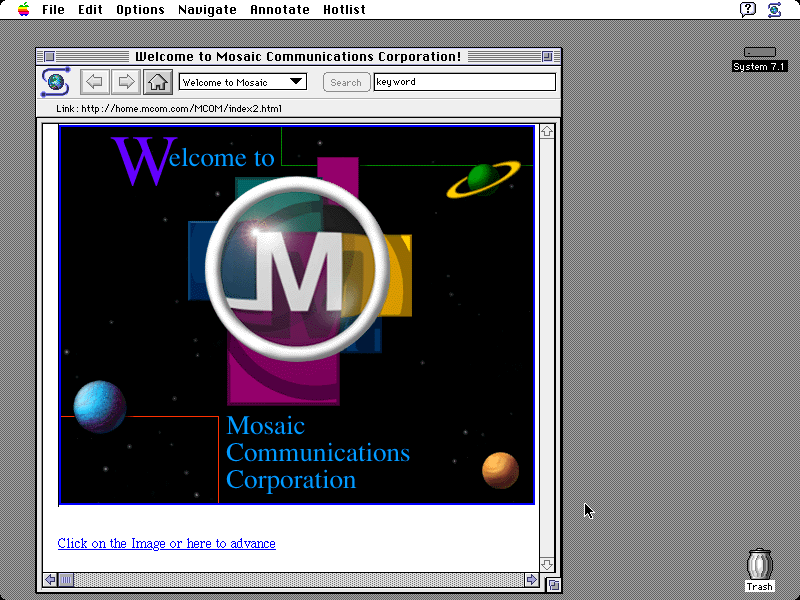
Here is a tour of World Wide Web viewing applications, before they became famous. What's striking about these early applications is that they had already worked out many of the features we associate with later browsers. A map assembled by the Museum offers a sense of the global scope of the early project. Mosaic was soon spun into Netscape, but it was not the first browser. The best known early browser was Mosaic, produced by Marc Andreesen and Eric Bina at the National Center for Supercomputing Applications (NCSA). On August 6, 1991, he published an explanation of He also released a code library, lib"Their efforts-over half a dozen browsers within 18 months-saved the poorly funded Web project and kicked off the Web development community," notes a commemoration of this project by the Computer History Museum in Mountain View, California. This time he relaunched his "World Wide Web" project in a way that would more likely secure its success. Some years later Berners-Lee returned to CERN.

Eventually, the disk was lost, and with it, the original Enquire." "The few people who saw it thought it was a nice idea, but no one used it. It allowed users to create "nodes"-information-packed index card-style pages that linked to other pages. Unfortunately, the PASCAL application ran on CERN's proprietary operating system. So in his spare time, he wrote up some software to address this shortfall: a little program he named Enquire. "Much of the crucial information existed only in people's heads." "The big challenge for contract programmers was to try to understand the systems, both human and computer, that ran this fantastic playground," Berners-Lee later wrote. But almost immediately, the inventor of the modern webpage noticed a problem: thousands of people were floating in and out of the famous research institute, many of them temporary hires.

When Tim Berners-Lee arrived at CERN, Geneva's celebrated European Particle Physics Laboratory in 1980, the enterprise had hired him to upgrade the control systems for several of the lab's particle accelerators. 11, 2011, and it appears unchanged below. As all of us do a little Web browsing this weekend, we thought resurfacing this piece outlining those early browsers might make all of us even appreciate Internet Explorer today. 2019 marks 30 years since Tim Berners-Lee worked at CERN and came up with a little idea known as the World Wide Web. Update: It's Memorial Day weekend here in the US, and the Ars staff has a long weekend accordingly.


 0 kommentar(er)
0 kommentar(er)
